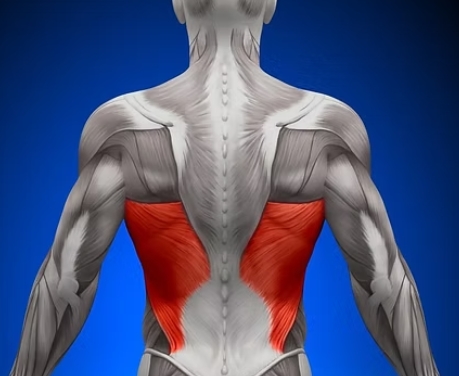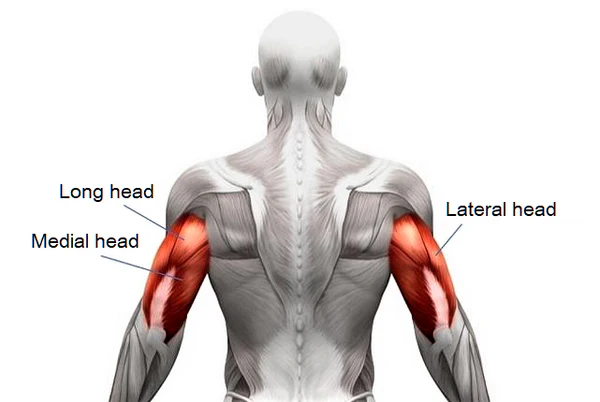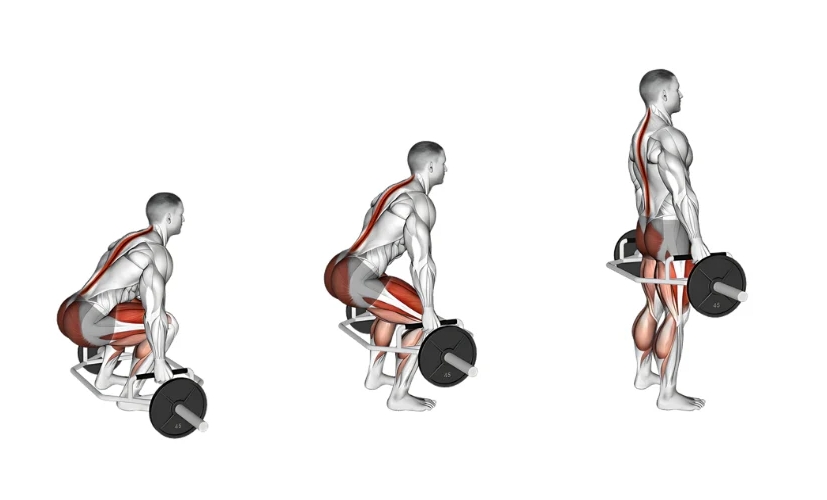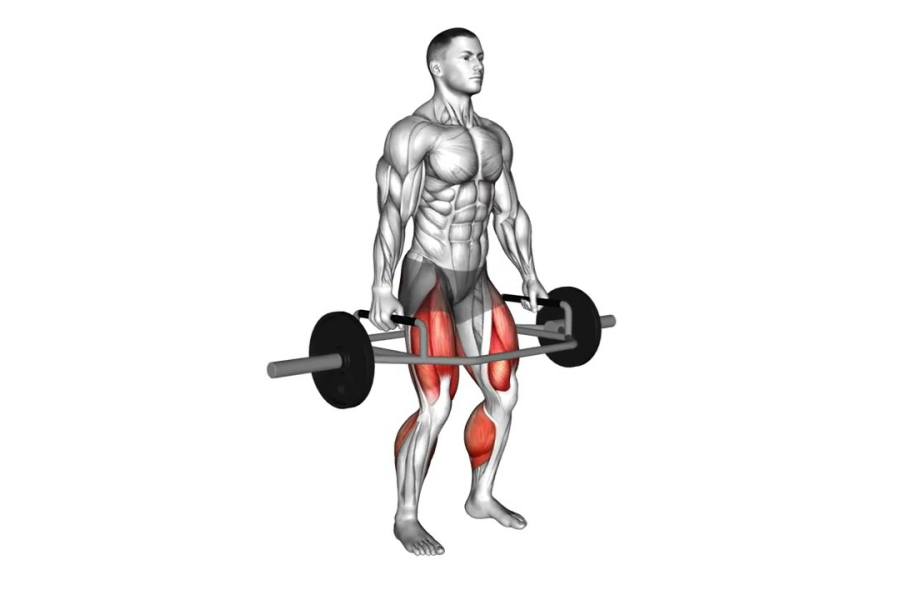Trap bar deadlift muscles worked? let’s cut to the chase: if you’re looking for one lift to seriously build strength and power from the ground up, the Trap Bar Deadlift is a game-changer. Why? Because stepping inside that hex bar lights up virtually every major muscle group in your body.
Primarily, you’re hammering your powerhouse glutes, driving hard with your quadriceps (quads), and powerfully engaging your hamstrings. But that’s just the start – your inner thighs (adductors), lower back (erectors), upper back (traps), lats, rock-solid core, and even your shoulders and arms play crucial supporting and stabilizing roles.
I’ve seen firsthand how mastering this lift transforms not just strength, but overall athleticism and physique. Ready to learn exactly how it works and how to do it right for maximum results? Let’s dive in.
1. What Muscles Do Trap Bar Deadlift Work?
Forget isolation exercises for a minute. The beauty of the Trap Bar Deadlift is its raw, compound power. When you lift that weight, you’re recruiting a massive team of muscles working together. Here’s the squad you’re putting to work:

The Primary Movers
- Gluteus Maximus (Glutes): Your powerhouse! These are the primary drivers for hip extension – standing up tall with the weight. Strong glutes mean a powerful lockout and, frankly, a better backside. Trust me, nothing builds athletic glutes like heavy trap bar pulls.
- Quadriceps (Quads): Front of your thighs. Because the trap bar allows a slightly more upright torso compared to a straight bar deadlift, your quads work hard, especially off the floor, driving those knees forward powerfully. It feels like a hybrid between a squat and a deadlift – that quad burn is real!
- Hamstrings: Back of your thighs. They work dynamically with the glutes for hip extension and also help control the descent. I often find clients feel their hamstrings working more effectively here than in some other deadlift variations due to the mechanics.
The Secondary Movers
- Adductor Magnus (Inner Thighs): These bad boys are crucial hip extensors, working alongside the glutes and hamstrings, especially as you approach lockout. Don’t neglect them!
- Erector Spinae (Lower Back): These muscles run along your spine and work isometrically to maintain a rigid, neutral spine throughout the lift. They prevent rounding and protect your back. Good form here is non-negotiable – I learned that the hard way early in my coaching career!
- Trapezius (Upper Back/Traps): Primarily the middle and lower fibers. They retract and stabilize your shoulder blades, keeping your chest proud and your upper back tight. You will feel these working, especially holding heavy weight at the top.

- Latissimus Dorsi (Lats): Your big back muscles. They act as stabilizers, helping to keep the bar close to your body and maintaining torso rigidity by depressing the shoulder blades. Think “bend the bar” or “protect your armpits” to engage them.
The Stabilizers
- Core Muscles (Abdominals, Obliques): Your entire core acts like a natural weightlifting belt, bracing hard to create intra-abdominal pressure and stabilize your spine against the load. Without this brace, the lift falls apart – I drill this constantly with my lifters.
- Deltoids (Shoulders – Front, Side, Rear): Primarily act as stabilizers for the shoulder joint, especially when holding the weight at the top. The front delts might get a slight stimulus initiating the pull.

- Biceps Brachii & Triceps Brachii: These arm muscles work isometrically. Biceps help maintain elbow position (slight bend) and grip tension, while triceps help lock the elbow and contribute to overall upper body tightness. You might not feel them burning, but they’re on duty!
Exactly how much each muscle contributes depends heavily on you – your individual build, limb lengths, the weight you’re lifting, and critically, your technique. That’s why mastering the movement pattern is step one.
2. How To Do a Trap Bar Deadlift and Get the Most Out of It
How To Do a Trap Bar Deadlift (Step-by-Step)
Here’s how I teach it, refined over years of coaching:

- Approach & Stance: Stand centered inside the trap barbell with your feet roughly hip-to-shoulder-width apart. Your toes should point forward or slightly out. The bar’s handles should align roughly over the middle of your foot.
- Grip: Hinge at your hips and bend your knees to lower down. Grip the handles firmly – use a double overhand grip or mixed grip if needed for heavier weights. Pro Tip I Learned: Grip the handle hard before you even initiate the pull – it helps engage your lats and back immediately.
- Set Your Spine: Before lifting an ounce, take a big breath into your belly (not your chest), brace your core hard (like you’re about to be punched), pull your shoulder blades down and back slightly (engage those lats and traps!), and ensure your spine is in a strong, neutral position from head to tailbone. This bracing is EVERYTHING.
- The Lift (The Drive): Push through your entire foot – feeling the floor beneath you. Drive your legs powerfully, straightening your knees while simultaneously thrusting your hips forward. Keep the barbell close to your body. Imagine you’re trying to push the earth away with your feet. Your torso will naturally become more upright as you stand.
- Lockout: Stand tall at the top, shoulders back, chest proud, hips fully extended (squeeze those glutes!), knees straight but not hyperextended. Hold briefly with full body tension.
- The Descent: Don’t just drop it! Reverse the motion with control. Hinge at your hips first, pushing them back, then bend your knees as the bar lowers past them. Maintain that braced core and neutral spine all the way down until the plates touch the floor. Reset completely for the next rep.
Get the Most Out of Your Trap Bar Deadlifts
Let’s be real, just going through the motions won’t cut it. Here’s how I help my clients maximize this incredible exercise:
- Embrace Progressive Overload: This is the golden rule of strength and muscle growth. You must gradually challenge yourself over time. That doesn’t mean maxing out every session! Aim to slowly, consistently increase the weight, the reps, or the sets over weeks and months. Track your lifts! I started adding just 2.5kg a week consistently, and the gains compounded massively.
- Consistency is King (or Queen!): You won’t master the technique or build significant strength doing this once in a blue moon. Aim to include trap bar deadlifts regularly in your program (e.g., 1-2 times per week). Practice builds efficiency, confidence, and strength. I’ve seen technique (and consequently, weight lifted) improve dramatically in clients simply by showing up consistently for 6 weeks.
- Respect Recovery & Fuel Your Machine: This is a demanding lift! Your muscles grow and get stronger outside the gym, during rest. Prioritize quality sleep (7-9 hours!), manage stress, and ensure you’re eating enough protein and overall calories to support muscle repair and growth. Trying to grind heavy deadlifts on poor sleep and junk food is a fast track to burnout or injury – learned that lesson personally early on!
- Focus on Quality Over Ego: Leave your ego at the door. It’s far better to lift a slightly lighter weight with perfect form than to grind out ugly, potentially dangerous reps chasing a number. Film yourself occasionally or ask a qualified coach (like yours truly!) to check your form. Perfect practice makes perfect progress.
The Trap Bar Deadlift isn’t just an exercise; it’s a fundamental strength builder. It efficiently targets your entire posterior chain (glutes, hams, back), your quads, and forces your entire body to work as a coordinated, braced unit. By mastering the technique, applying progressive overload consistently, and respecting recovery, you unlock a tool that builds raw power, athleticism, and a resilient, strong physique. Step inside that hex bar, brace hard, drive with your legs, and feel the power surge through you. Now go lift strong!
Welcome! I’m Jordan Mitchell, the dedicated editor at Leadman Fitness, where we specialize in manufacturing high-quality bumper plates, barbells, weight machines, kettlebells, and dumbbells. With a passion for fitness and a keen eye for detail, I ensure that our product information is clear, accurate, and engaging for our customers. My role involves collaborating closely with our design and production teams to highlight the innovative features and superior craftsmanship that set Leadman Fitness apart in the industry. Whether you’re a professional athlete or a fitness enthusiast, I’m here to provide you with the information you need to achieve your training goals with our top-of-the-line equipment.
